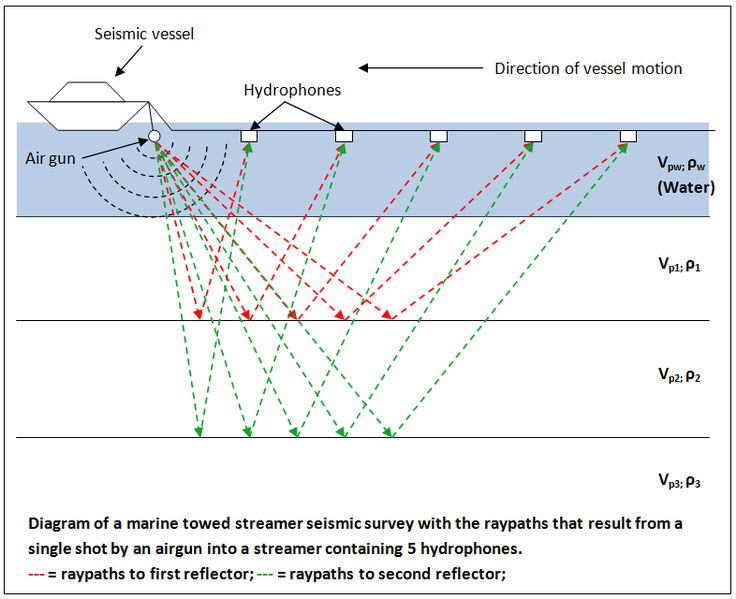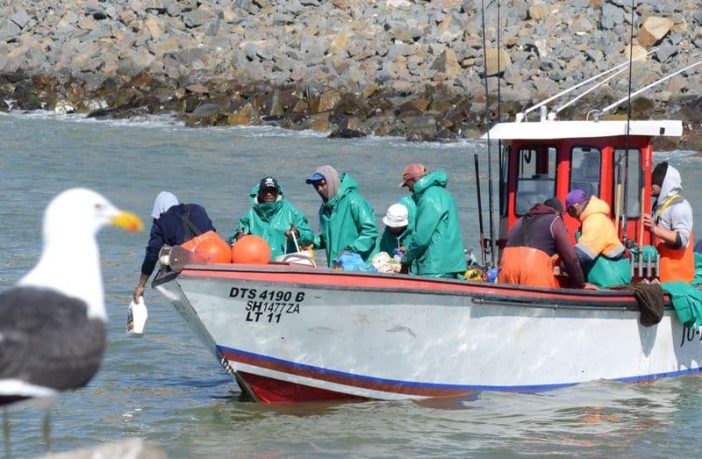- Tosaco Energy has received Environmental Impact Assessment (EIA) authorisation from the Department of Mineral Resources and Environment (DMRE) to proceed with seismic blasting in Block 1 from Alexander Bay to Hondeklipbaai, off the West Coast of South Africa.
- This follows the failure of two other seismic surveys to proceed, halted by court interdicts, one off South Africa’s West Coast and the other off the country’s Wild Coast.
- The latest seismic survey EIA approval has local fishing communities plus environmental groups up in arms.
The Green Connection, an NGO prioritising sustainable development goals, plus small-scale fisherman in Alexander Bay, Port Nolloth, Kleinzee, Hondeklipbaai, and Kommagas, have lodged their appeal against the authorisation granted to Tosaco. According to the Green Connection’s Community Outreach Coordinator Neville van Rooy, the local fishing communities are fighting similar issues that ultimately led to the interdicting of the Shell and Searcherseismic survey projects, in the first place.
Local fisher communities not properly consulted
“First there is a similar lack of meaningful consultation with those who would be affected. During interactions in Kleinsee and Hondeklipbaai this week, communities said that they clearly requested that Tosaco’s consultants Environmental Impact Management Services (EIMS) come back to do proper consultation at more suitable times. The fact that most of the fishermen were not available to attend the meetings should have been an indication that they face many limitations and challenges, which should have been taken into account,” says van Rooy.
“Also, since many fisherfolk do not have access to the internet, it is impractical to have consultations over Zoom, excluding many of those people who will be affected from participating in the Environmental Impact Assessment (EIA) process. This is why communities believe that this approval is not only unacceptable but also illegal. By now, as demonstrated by the Shell and Searcher cases, Tosaco and any others who have the idea to pursue offshore oil and gas in South Africa must know, that proper consultation with the people is not negotiable. Equitable and effective participation in the decision-making process as required by the National Environmental Management Act (NEMA) must be ensured,” says van Rooy.
The Green Connection says it also questions the legality of the environmental authorisation, since it was during the pre-application phase already, that EIMS and the Petroleum Agency of South Africa (PASA) had decided that two specialist studies would suffice, without affording relevant stakeholders an opportunity to comment on this pre-application decision.
Van Rooy says: “However, if we consider the judge’s finding in the Searcher interim interdict judgment, applicants who want to conduct seismic testing are required to meaningfully consult with small-scale fishers and fishing communities that rely on the oceans for their livelihoods and culture, and cannot only rely on desktop studies to understand the impacts of seismic testing operations, especially since there is a growing body of scientific evidence exposing the negative impacts to marine life and ecosystems.”

Diagram of a marine seismic survey. Image credit: Wikimedia Commons
In 2D seismic surveying both the blast and sound detectors (numbering up to a hundred or more per charger) are moved along a straight line. In 3D seismic surveying the sound detectors (numbering up to a thousand or more) are spread out over an area and the blast is moved from location to location through the area. Seismic testing involves sending regular “blasts” under water in short sequence to create a map of the surface and sub-surface.
The noise generated can reach 250 decibels as the sound waves generated by the blast penetrate the seabed. In comparison, the loudest whale noises range between 140 and 190 decibels.
This sound is proven in multiple peer-reviewed research papers to disturb, scare and alter marine life such as separating whales and their calves. This affects the endangered African Penguin, two subspecies of Blue Whales, the Antarctic Blue Whale and the Pygmy Blue Whale, the protected Southern Right Whales, Bryde’s Whales, Loggerhead Sea Turtles, Orcas and multiple Shark species all found along the Western Cape coast.
The Green Connection believes that because it underestimated the potential extent, range and magnitude of the impacts of the proposed seismic blasting, EIMS and Tosaco also failed to adequately consider the effects on the small-scale fisheries sector. For instance, according to EIMS, small-scale fishing activities take place much closer to shore than it really does. However, the reality is that some fishers venture much deeper offshore to reach fish stocks.
The assessment also underestimates the effects of seismic surveys on the behaviour of fish, particularly hake and snoek, within the 3D seismic survey area. As a result, it also underestimates the potential impact on catch rates and the knock-on effect such impacts would have on small-scale fishers and communities that rely on fishing for their livelihoods and culture.
Concerned citizen Dawie Markus from Hondeklipbaai says, “What they call consultation is not what we consider to be consultation, where they force decisions down our throat. As small-scale fishers, we are concerned about the potential negative impacts on our ocean and environment. We have been completely blind-sided with this project approval because we know little-to-nothing about it. But what we do know is that seismic testing in our ocean will harm marine life and the marine ecosystem and as a result, is likely to affect our livelihoods, for us here on the West Coast. We cannot allow government to force such bad decisions down our throats.”
Author: Bryan Groenendaal











